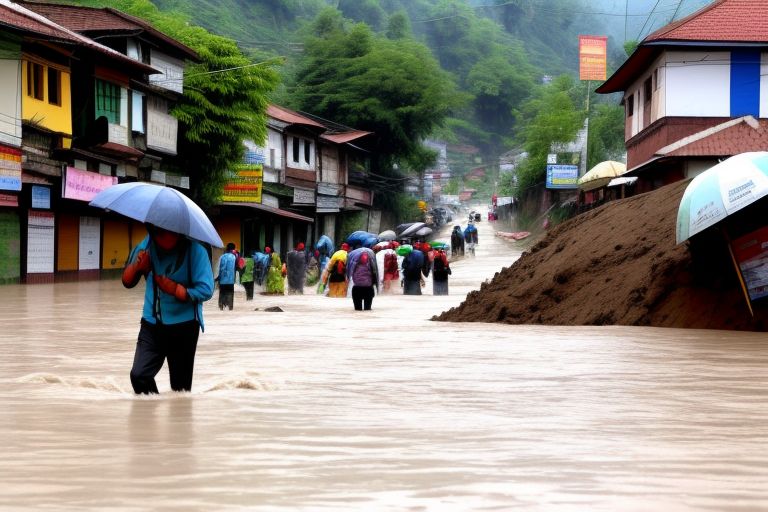Heavy rain has continued for one week and; thus, Kathmandu, the capital city of Nepal, has experienced severe flooding and landslides a few days ago. Heavies rainfall has therefore interfered with people’s routines and normal lives and a number of people have been affected and buildings destroyed in this city and the surrounding areas.
The Met Forecasting Division said that over 200mm of rainfall has been recorded in the past 48 hours in Kathmandu valley, while the central, eastern and western hills have been receiving hefty amounts of rain leading to flash flooding in some of the valley areas and landslides in the hilly ones. The Bagmati River at the core of the city is flooded, posing a significant risk for houses and facilities around the region.
Source with the local departmentsreports state that at least three people have died and several are stillmissing, all because of the floods. Among them are two laborers who were covered in a landslide at a construction site in the district of Sindhupalchowk which is 125 km east of Kathmandu. People are rescuing, but there are problems with the weather.
Transport has been greatly affected by the flooding within and around the city. Some of these are parts of the Arniko Highway which connects Kathmandu to the border with China and which has been covered by floodwaters or mudflows. The Tribhuvan International Airport of Nepal is the only international airport of the country and there have been frequent flight delays or cancellation because of cloudy day and water logging on its runway.
Due to the crisis the government of Nepal has deployed security forces and rescue response teams to search and rescue people. Nepal’s Prime Minister Pushpa Kamal Dahal “Prachanda” appealed to relevant ministries and agencies for emergency meeting to address the situation. The government has also called on other international organizations for support in tackling the disaster.
The National Disaster Risk Reduction and Management Authority (NDRRMA) has warned the communities of the possibility of further landslides and flash floods and advised those in the hazard prone areas to be prepare to move out. A number of stall like in schools, churches and other centres of gathering have been opened to host the affected families.
People have also associated the flooding with some forms of dangers as pertains to health. The authorities have signaled that water may be contaminated, which raises the risks of contracting waterborne illnesses and have encouraged residents to boil water before using it for drinking or washing dishes.
The calamity has therefore called for enhancement of urban development and physical infrastructures in Kathmandu valley. According to specialists, the problem Opinion here is that high rates of urbanization and improper provision of drainage systems have aggravated the effects of rainfall. Countless people, including city architects and live nature enthusiasts, are currently urging everyone to search for ways to prevent disasters from occurring again in the future.
While efforts to manage the ongoing disaster, questions are being asked on how ready the city, that is the Katmandu city is for event’s like these that are closely realted with the effects of climate change and which are becoming more prevalent in this century. This picture shows that urban centres in mountainous areas remain threatened by disasters and there is the need to enhance integrated disaster management.


